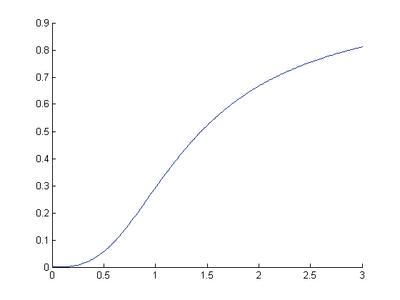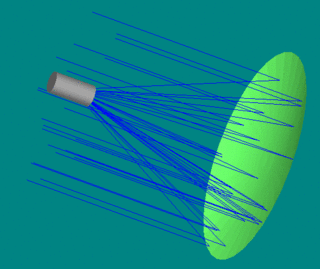Critical to the refining of bitumen into fungible fuel from tar sands is the use of process steam. Currently, this steam is produced by burning natural gas. As such, a barrel of oil from bitumen requires approximately 1.35 Mbtu of natural gas from Syncrude reports. As the price of natural gas accelerates, so does the price of tar sand oil. This feedback cycle has the oil and gas industry publicily worried about the rising price of a million btus.
The obvious solution that has been presented by many people is the construction of CANDU nuclear steam plants up in Fort McMurray. The refineries are largely sitting in one convenient row. Combined heat and power production from nuclear plants has the potential to be very efficient and profitable. Since Alberta lacks cheap hydroelectric power, nuclear may provide the cheapest means for baseload. The steam left-over from the turbines can be used for bitumen processing, and is essentially free energy to be sold to the oil patch companies.
Oilsand natural gas consumption by 2015 -- by which time conventional reserves should be gone -- is estimated at between 1.2 and 1.8 billion cubic feet per year by the National Energy Board. This works out to about 40 - 60 MW of continuous heat production from a nuclear plant. Generally nuclear plants heat-to-electricity efficiency is only around 30 %, meaning that 70 % is potentially available as heat. It is reasonable to expect that only a small plant would be necessary to provide the needed steam output.
There are a number of issues to be expected with such a project.
- NIMBY syndrome. With credit to The Onion, nuclear fission is in dire need of a rebranding. I think even Fort McMurray is not immune to this issue. The even bigger problem is how to store the waste. The geology of the Canadian Shield is ideal for the storage of nuclear waste, but the location remains extremely contentious.
- Steam temperature. Nuclear plants usually operate a core temperature around 800oC. From what I can gather, the steam temperature requirements for bitumen are all relatively low, so this should not be a big issue for a CHP plant.
- Water. Right now the steam process is consuming large amounts of water from the Athabasca River. The need for cooling of the nuclear plants will consume even more water, although a nuclear steam plant will by definition not be creating so much waste heat. The solution lies in further closing of the bitumen refinement process, so that the water is recycled. This research is ongoing.
- Getting nuclear engineers to live in Fort McMurray. It's hard enough to find roughnecks to work up there for $70,000 per year. More discriminating and better educated engineers will command very high salaries. Better automation is one possible solution. The nuclear industry is already deeply involved in robotics. The other half of the fix is to improve the quality of life on the oilpatch, something the provincial government should be doing anyway to ensure there's a sufficient workforce for the industry. A good portion of oil revenues should be routed back into town improvements (assuming they can find construction workers).









